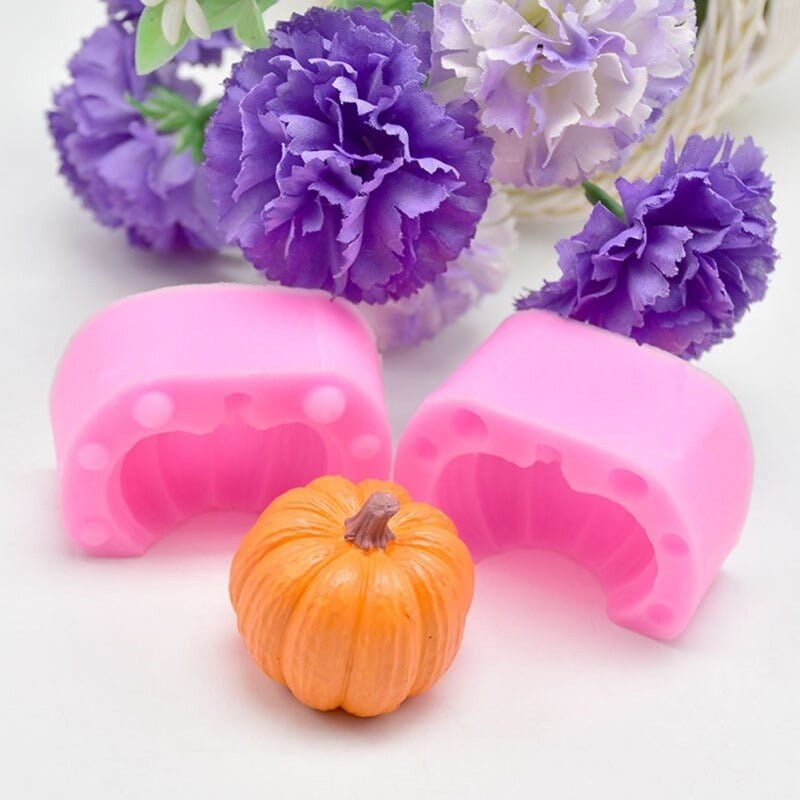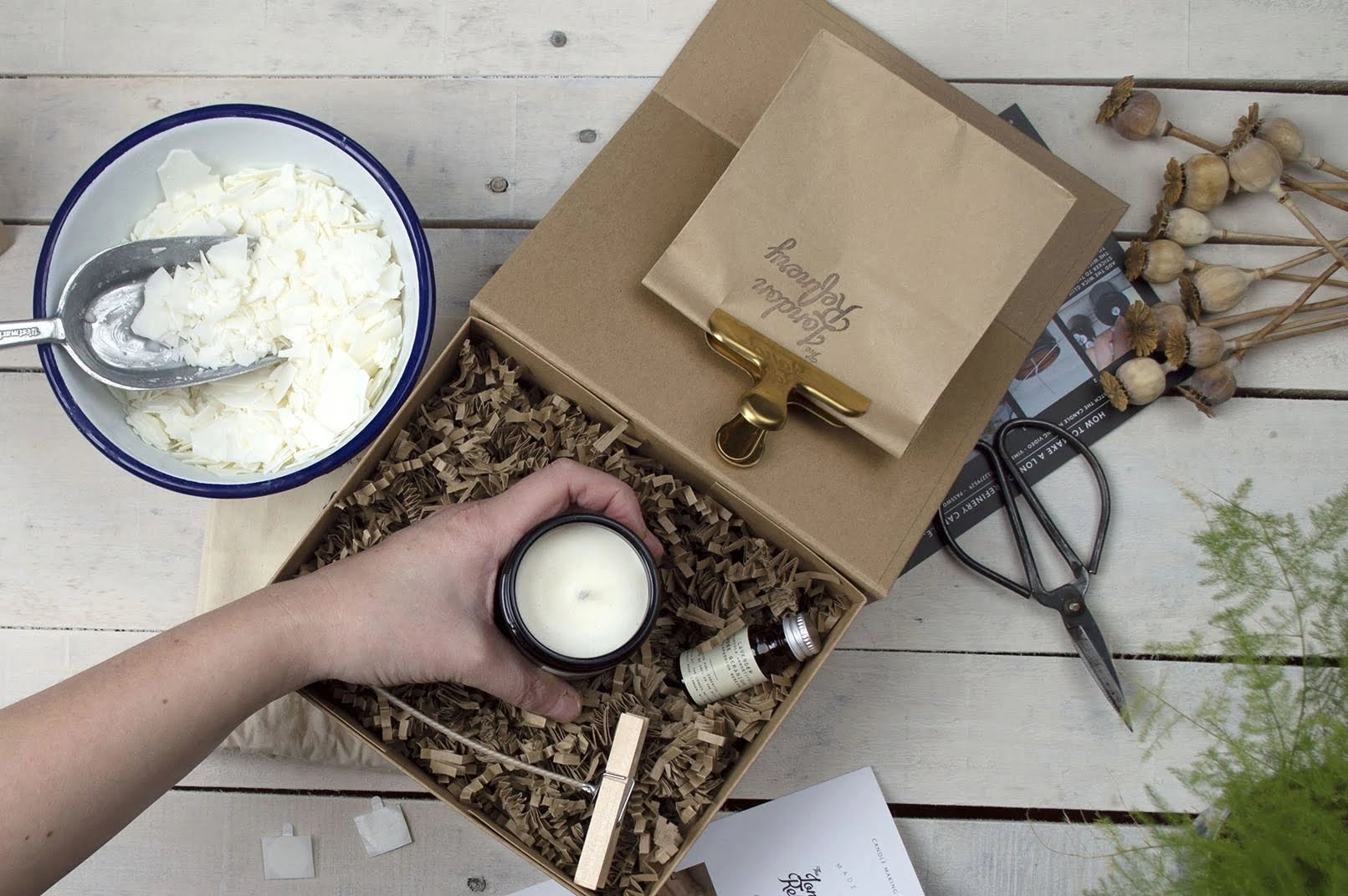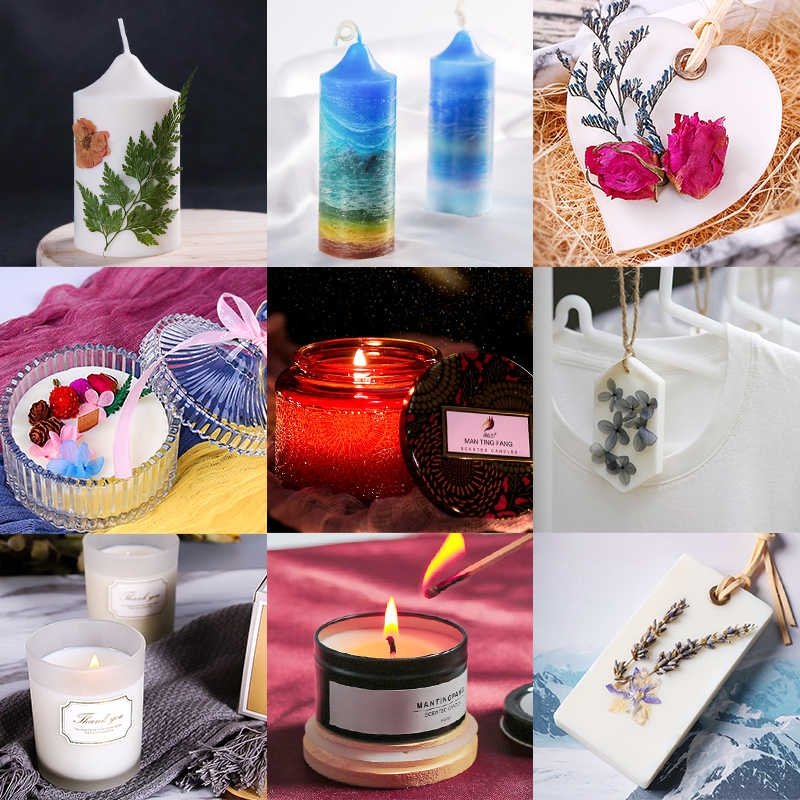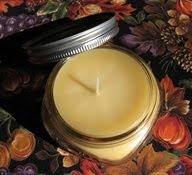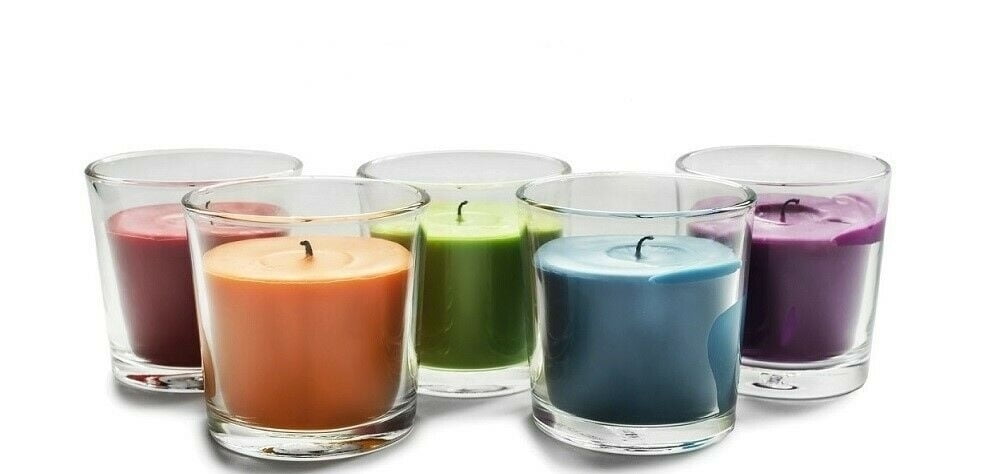Candle making is an art form that has been around for centuries. People have been using candles to provide light, to celebrate religious ceremonies, and to enjoy the ambiance of a flickering flame. Today, candles are still used for these purposes, and they have also become popular as a way to relax and to de-stress.
If you are interested in learning how to make candles, you can purchase a candle making kit. These kits come with all of the supplies you need to get started, including molds, wax, wicks, and fragrances. You can also purchase kits that include tools, such as thermometers and pouring pots.
When you are choosing a candle making kit, it is important to consider the types of candles you want to make. Some kits are designed for making specific types of candles, such as soy candles or beeswax candles. If you are not sure which type of kit to purchase, you can choose a kit that is designed for beginners. These kits include all of the basic supplies you need to get started.
Once you have your kit, you can begin making candles. The first step is to choose the wax you want to use. There are a variety of different waxes to choose from, including soy wax, beeswax, and paraffin wax. Each type of wax has its own benefits and drawbacks.
Soy wax is a popular choice because it is made from a renewable resource. It also has a lower melting point than other types of wax, so it is easy to work with. Beeswax is another popular choice because it is natural and has a pleasant scent. Paraffin wax is the most popular type of wax, because it is affordable and easy to work with.
Once you have chosen the wax you want to use, you need to decide on the type of candle you want to make. There are a variety of different candle shapes and sizes to choose from, including votives, pillars, tapers, and tealights. You can also make your own custom shapes.
The next step is to prepare the mold. Some molds come with a release agent, which you can use to help the candle release from the mold. If your mold does not come with a release agent, you can use a small amount of vegetable shortening.
Once the mold is prepared, you can start melting the wax. The wax should be melted to a temperature of 165 degrees Fahrenheit. Once it is melted, you can add the fragrance and the dye, if desired.
Next, you need to add the wick to the mold. The wick should be centered in the mold and should be sticking out of the top.
Once the wax is melted, poured, and colored, you can insert the wick into the wax. Use a pair of tweezers to hold the wick in place while the wax hardens.
The final step is to let the candle cool and harden. This can take several hours, so be patient. Once the candle is hard, you can remove it from the mold.
Now that you know how to make candles, you can experiment with different types of wax, fragrances, and colors. You can also try making different shapes and sizes of candles. With a little practice, you can create beautiful, handmade candles that will add warmth and beauty to your home.
Candle Making Robinson Mall
Candle making is a popular hobby that can be enjoyed by people of all ages. It is a fun and easy way to relax and express your creativity.
Candles can be made from a variety of materials, including wax, beeswax, soy wax, paraffin wax, and gel wax. The most popular type of candle is made from paraffin wax.
The first step in making a candle is to choose the type of wax you want to use. Paraffin wax is the most common type of wax used in candle making. It is easy to work with and is available in a variety of colors.
The next step is to choose a container for your candle. You can use a variety of containers, including mason jars, wine bottles, and glass jars.
The next step is to melt the wax. You can do this by using a stovetop or a microwave.
Once the wax is melted, you can add fragrance or essential oils to the wax. You can also add color to the wax.
The next step is to pour the wax into the container.
The final step is to allow the candle to cool. Once the candle is cool, you can light it and enjoy.
Candle Making Supplies Milwaukee County
Looking for high-quality candle making supplies? Look no further than Milwaukee County. We have everything you need to get started, including wax, wicks, scents, and containers. Our selection is sure to meet your needs, whether you’re a beginner or a seasoned pro.
Why choose Milwaukee County for your candle making supplies? Here are just a few reasons:
• Our prices are competitive – we won’t break the bank just to get your business.
• Our selection is unbeatable – we have everything you need to get started, and we’re always expanding our inventory.
• Our customer service is top-notch – we’re here to help you every step of the way, from choosing the right supplies to troubleshooting.
If you’re looking for high-quality candle making supplies, look no further than Milwaukee County. We have everything you need to get started, and we’re always expanding our inventory. Contact us today to learn more!
Candle Making, Spinning In Water
, and Other Scientific Wonders
What do candles have in common with spinning in water? They are all examples of scientific wonders that we take for granted. Candle making is a process that has been around for centuries. The flame in a candle is fueled by a small wick, which is set in wax. The heat from the flame melts the wax around the wick, and the wax is drawn up the wick. The heat from the flame vaporizes the liquid wax in the wick, and the vaporized wax is drawn up into the flame, where it is burned.
Candles are made of wax, which is a hydrocarbon. Hydrocarbons are molecules that contain only hydrogen and carbon atoms. The simplest hydrocarbon is methane, which is made of one carbon atom and four hydrogen atoms. The most common hydrocarbon is octane, which is made of eight carbon atoms and 18 hydrogen atoms. Wax is made of long chains of hydrocarbons. The chains of hydrocarbons in wax are called alkanes. Alkanes are molecules that contain only carbon and hydrogen atoms.
Wax is a solid at room temperature, but it can be melted and vaporized by the heat from a flame. When the wax is vaporized, it is drawn up into the flame, where it is burned. The heat from the flame vaporizes the liquid wax in the wick, and the vaporized wax is drawn up into the flame, where it is burned. The flame in a candle is fueled by a small wick, which is set in wax. The heat from the flame melts the wax around the wick, and the wax is drawn up the wick. The heat from the flame vaporizes the liquid wax in the wick, and the vaporized wax is drawn up into the flame, where it is burned.
The flame in a candle is fueled by a small wick, which is set in wax. The heat from the flame melts the wax around the wick, and the wax is drawn up the wick. The heat from the flame vaporizes the liquid wax in the wick, and the vaporized wax is drawn up into the flame, where it is burned.
The flame in a candle is fueled by a small wick, which is set in wax. The heat from the flame melts the wax around the wick, and the wax is drawn up the wick. The heat from the flame vaporizes the liquid wax in the wick, and the vaporized wax is drawn up into the flame, where it is burned.
The flame in a candle is fueled by a small wick, which is set in wax. The heat from the flame melts the wax around the wick, and the wax is drawn up the wick. The heat from the flame vaporizes the liquid wax in the wick, and the vaporized wax is drawn up into the flame, where it is burned.
The flame in a candle is fueled by a small wick, which is set in wax. The heat from the flame melts the wax around the wick, and the wax is drawn up the wick. The heat from the flame vaporizes the liquid wax in the wick, and the vaporized wax is drawn up into the flame, where it is burned.
The flame in a candle is fueled by a small wick, which is set in wax. The heat from the flame melts the wax around the wick, and the wax is drawn up the wick. The heat from the flame vaporizes the liquid wax in the wick, and the vaporized wax is drawn up into the flame, where it is burned.
The flame in a candle is fueled by a small wick, which is set in wax. The heat from the flame melts the wax around the wick, and the wax is drawn up the wick. The heat from the flame vaporizes the liquid wax in the wick, and the vaporized wax is drawn up into the flame, where it is burned.
The flame in a candle is fueled by a small wick, which is set in wax. The heat from the flame melts the wax around the wick, and the wax is drawn up the wick. The heat from the flame vaporizes the liquid wax in the wick, and the vaporized wax is drawn up into the flame, where it is burned.
The flame in a candle is fueled by a small wick, which is set in wax. The heat from the flame melts the wax around the wick, and the wax is drawn up the wick. The heat from the flame vaporizes the liquid wax in the wick, and the vaporized wax is drawn up into the flame, where it is burned.
The flame in a candle is fueled by a small wick, which is set in wax. The heat from the flame melts the wax around the wick, and the wax is drawn up the wick. The heat from the flame vaporizes the liquid wax in the wick, and the vaporized wax is drawn up into the flame, where it is burned.
The flame in a candle is fueled by a small wick, which is set in wax. The heat from the flame melts the wax around the wick, and the wax is drawn up the wick. The heat from the flame vaporizes the liquid wax in the wick, and the vaporized wax is drawn up into the flame, where it is burned.
The flame in a candle is fueled by a small wick, which is set in wax. The heat from the flame melts the wax around the wick, and the wax is drawn up the wick. The heat from the flame vaporizes the liquid wax in the wick, and the vaporized wax is drawn up into the flame, where it is burned.
The flame in a candle is fueled by a small wick, which is set in wax. The heat from the flame melts the wax around the wick, and the wax is drawn up the wick. The heat from the flame vaporizes the liquid wax in the wick, and the vaporized wax is drawn up into the flame, where it is burned.
Candles are made of wax, which is a hydrocarbon. Hydrocarbons are molecules that contain only hydrogen and carbon atoms. The simplest hydrocarbon is methane, which is made of one carbon atom and four hydrogen atoms. The most common hydrocarbon is octane, which is made of eight carbon atoms and 18 hydrogen atoms. Wax is made of long chains of hydrocarbons. The chains of hydrocarbons in wax are called alkanes. Alkanes are molecules that contain only carbon and hydrogen atoms.
Wax is a solid at room temperature, but it can be melted and vaporized by the heat from a flame. When the wax is vaporized, it is drawn up into the flame, where it is burned. The heat from the flame vaporizes the liquid wax in the wick, and the vaporized wax is drawn up into the flame, where it is burned. The flame in a candle is fueled by a small wick, which is set in wax. The heat from the flame melts the wax around the wick, and the wax is drawn up the wick. The heat from the flame vaporizes the liquid wax in the wick, and the vaporized wax is drawn up into the flame, where it is burned.
The flame in a candle is fueled by a small wick, which is set in wax. The heat from the flame melts the wax around the wick, and the wax is drawn up the wick. The heat from the flame vaporizes the liquid wax in the wick, and the vaporized wax is drawn up into the flame, where it is burned.
The flame in a candle is fueled by a small wick, which is set in wax. The heat from the flame melts the wax around the wick, and the wax is drawn up the wick. The heat from the flame vaporizes the liquid wax in the wick, and the vaporized wax is drawn up into the flame, where it is burned.
The flame in a candle is fueled by a small wick, which is set in wax. The heat from the flame melts the wax around the wick, and the wax is drawn up the wick. The heat from the flame vaporizes the liquid wax in the wick, and the vaporized wax is drawn up into the flame, where it is burned.
The flame in a candle is fueled by a small wick, which is set in wax. The heat from the flame melts the wax around the wick, and the wax is drawn up the wick. The heat from the flame vaporizes the liquid wax in the wick, and the vaporized wax is drawn up into the flame, where it is burned.
The flame in a candle is fueled by a small wick, which is set in wax. The heat from the flame melts the wax around the wick, and the wax is drawn up the wick. The heat from the flame vaporizes the
Flash Point Essential Oil Candle Making
When you think of candles, what comes to mind? For many people, the answer is “relaxing.” And there’s a good reason for that: candles have been used for centuries to create a relaxing atmosphere.
But did you know that you can also use candles to improve your mood? By making your own essential oil candles, you can enjoy the benefits of aromatherapy whenever you want.
Here’s how it works: essential oils are believed to have therapeutic properties, which means they can be used to improve your mood or health. When you burn an essential oil candle, the scent of the oil will be released into the air. This will allow you to enjoy the benefits of the oil whenever you want.
In addition to the benefits of aromatherapy, essential oil candles also have the benefits of traditional candles. They can be used to create a relaxing or calming atmosphere, and they can also be used to scent a room.
If you’re interested in making your own essential oil candles, here’s what you need to know:
First, you need to choose the right essential oils. Some oils are better suited for relaxation, while others are better suited for improving your mood. You can also choose oils that are beneficial for your health, such as oils that are known to improve your immune system or help you relax.
Next, you need to choose the right type of candle. There are a few different types of candles that you can choose from, including soy wax candles, beeswax candles, and paraffin wax candles. Each type of candle has its own benefits and drawbacks.
Soy wax candles are made from soy wax, which is a renewable resource. They are also non-toxic, which means they are safe to burn. Soy wax candles also have a long burn time, and they produce little to no smoke.
Beeswax candles are made from beeswax, which is a natural resource. They are also non-toxic, and they produce little to no smoke. Beeswax candles also have a long burn time.
Paraffin wax candles are made from paraffin wax, which is a non-renewable resource. They are also toxic, and they produce a lot of smoke. Paraffin wax candles also have a short burn time.
Once you’ve chosen the type of candle you want to make, you need to choose the right wick. The wick is the part of the candle that burns, and it is important to choose the right wick for your candle.
There are a few different types of wicks, including cotton wicks, paper wicks, and metal wicks. Each type of wick has its own benefits and drawbacks.
Cotton wicks are made from cotton, which is a natural resource. They are also non-toxic, and they produce little to no smoke. Cotton wicks are also easy to light, and they have a long burn time.
Paper wicks are made from paper, which is a renewable resource. They are also non-toxic, and they produce little to no smoke. Paper wicks are also easy to light, and they have a long burn time.
Metal wicks are made from metal, which is a non-renewable resource. They are also toxic, and they produce a lot of smoke. Metal wicks are also difficult to light, and they have a short burn time.
Once you’ve chosen the type of wick you want to use, you need to choose the right size of wick. The size of the wick is important, because it needs to be large enough to burn the wax evenly.
There are a few different sizes of wicks, including standard wicks, tapered wicks, and chunky wicks. Standard wicks are the most common size of wick, and they are the best size for most candles. Tapered wicks are thinner than standard wicks, and they are the best size for candles that are made from small amounts of wax. Chunky wicks are thicker than standard wicks, and they are the best size for candles that are made from large amounts of wax.
Once you’ve chosen the type of wick, the size of the wick, and the type of wax, you need to choose the right scent for your candle. There are a variety of different scents available, including floral scents, citrus scents, and woodsy scents.
Once you’ve chosen the type of oil, the type of wax, the size of the wick, and the scent of the candle, you’re ready to start making your own essential oil candle.
To make an essential oil candle, you need to start by melting the wax. You can do this by using a double boiler or by using a microwave.
Once the wax is melted, add the essential oil to the wax. Stir the wax until the oil is fully combined.
Next, pour the wax into a candle mold. You can find a variety of different candle molds online or at your local craft store.
Once the wax has hardened, you can light your candle and enjoy the benefits of aromatherapy.

Welcome to my candle making blog! In this blog, I will be sharing my tips and tricks for making candles. I will also be sharing some of my favorite recipes.

